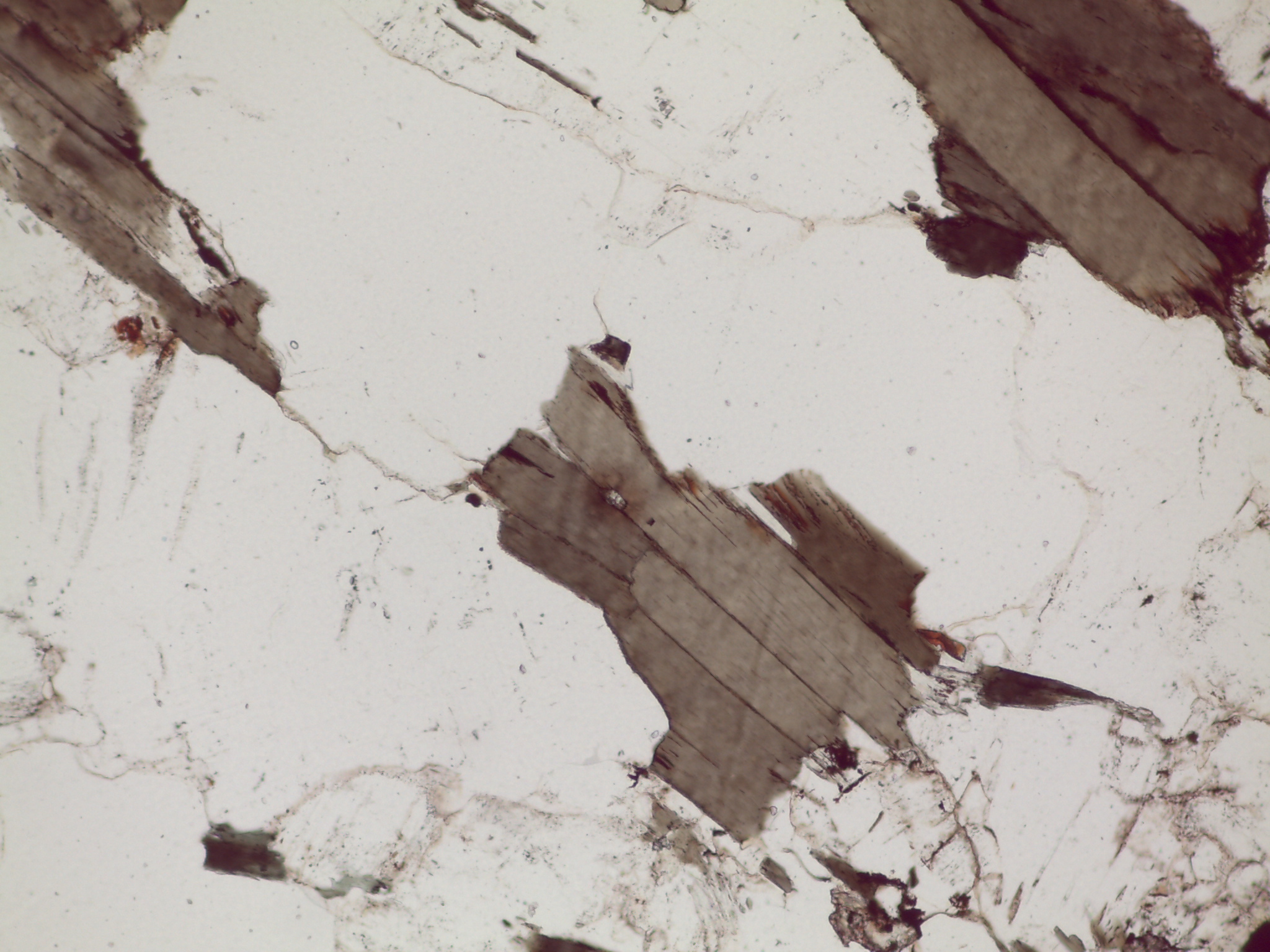Physical Properties |
|
| Chemical formula | ZrSiO4 |
| Class | Nesosilicate Isolated tetrahedra |
| Crystal system | Tetragonal |
| Habit | Square prisms Pyramids Rounded grains are also common |
| Color | Brown to green Gray Red Colorless |
| Hardness | 7.5 |
| Specific gravity | 4.68 |
| Cleavage | Poor (100), poor {101} |
| Fracture | Conchoidal |
| Luster | Adamantine |
| Transparency | Translucent to transparent |
| Streak | Colorless to white |
Optical Properties |
|
| PPL | Colorless to pale yellow or brown May be weakly pleochroic High relief May display pleochroic decay halo |
| XPL | High birefringence High relief May display decay halo |
| δ | 0.06 |
| after Perkins, 349 |
Zircon in Hand Sample
It’s really hard to find zircons in hand sample that are large enough to see, let alone to be worth gigapanning, so there are no zircon hand sample images for you. Sorry about that.
Here’s an explorable scanning electron micrograph of zircon, though.
Zircon in Thin Section
Zircon is most commonly seen as an accessory mineral. Making you hunt through GigaPans for accessory minerals surrounded by things that aren’t zircon is cruel, so we’ll skip it. Unless you want to try to find it in a biotite gneiss, in which case a) wow, are you dedicated and b) the plane polars image is here and the crossed polars image is here. Have fun.
Your friendly author did the work of finding one for you. This zircon grain, which is from the biotite gneiss slide above, features a decay halo.

